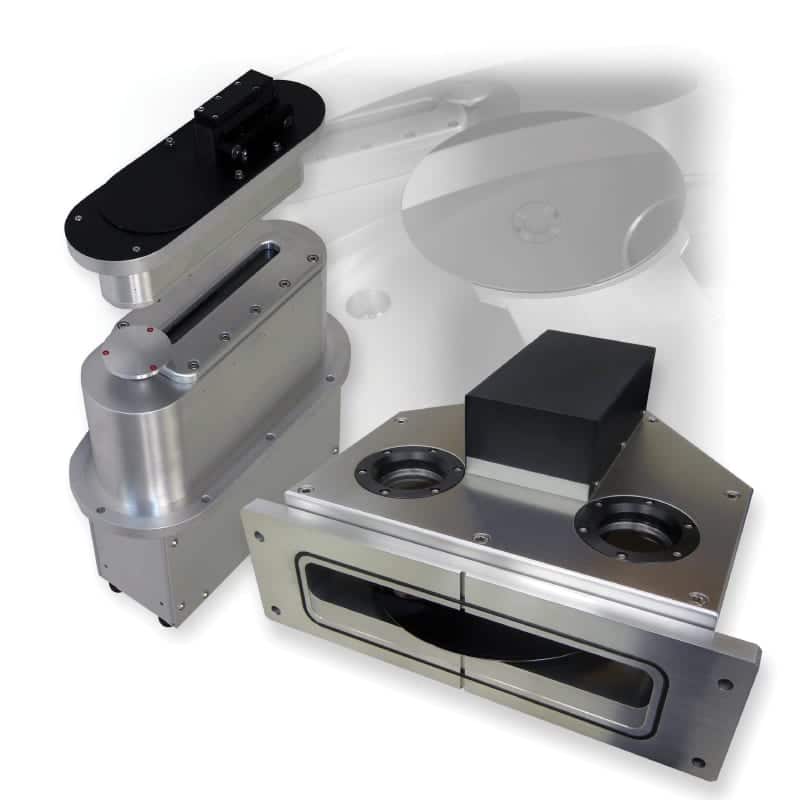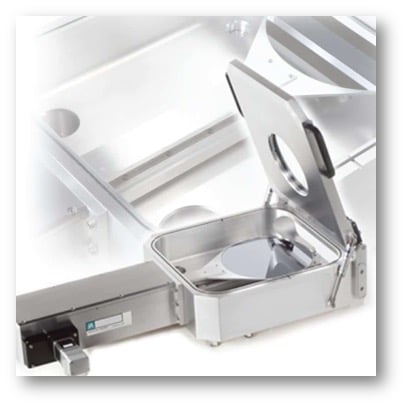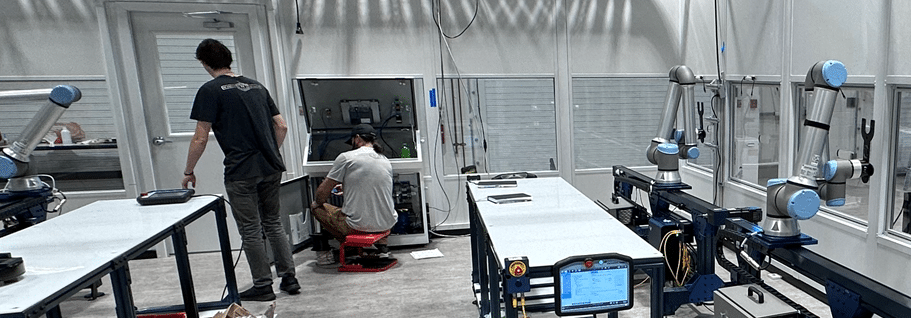Case Study – Hine Optical Aligners
Wendy Porter
February 10, 2022

Hine Optical Aligners Include Intelligent Alignment Algorithms to Provide Rapid and Reliable Positioning
CHALLENGE
The Need to Create a High Level of Repeatability
Integration, automation, and customization drive the semiconductor industry to identify new ways companies can lower costs and improve the time it takes to deliver a product to market.
Wafer pre-aligners are widely used and can be an effective and timely solution when determining proper alignment of a wafer. The alignment process begins when the optical sensor unit detects the edge of the wafer and calculates the central deviation and notch position, which sends the results to the robot. There are variants—for example, the wafer may have shifted position, so when the robot picks it up, it is outside its optimum position. Industry standards exist on how much variance is acceptable. However, a millimeter shift here or there may move the wafer beyond its target zone and the “acceptable” variance may no longer be acceptable for the customer.
For OEMs in the semiconductor industry, as well as OEMs looking to retrofit existing systems, precision positioning in wafer handling can provide more flexibility, less downtime, and a significant cost savings. The right aligner with the latest technologies plays a critical role in positioning wafers accurately before they are transferred onto the exposure platform. The ability to do so with extreme precision and repeatability can greatly improve the entire manufacturing process.
SOLUTION
A Precise and Reliable Alignment Solution for More Flexibility and Less Downtime
The HA-7x series Optical Aligners provide swift and cost-effective centering and angular positioning of wafers up to 300mm in diameter. For example, when a robot picks a wafer from a cassette, the robot cannot know exactly where and how that wafer is positioned. The Hine Aligner takes the “guesswork” out of the process.
Although the Hine Automation Aligners are explicitly designed for use with Hine Automation vacuum robots, they can also operate in a stand-alone mode and with robots from other manufacturers.
The HA-74/75/76 aligners are the ideal choice when the process chamber requires:
- the fiducial (specific point of reference) oriented to a particular axis of the chamber
- the substrate/wafer placement of higher precision than the cassette tolerance provides.
The Hine Aligners feature an optical detection system comprised of a laser-through beam and a CCD Array. This detection system and its mechanical system, with brushed DC motors and ferrofluidic feed-through, work together to provide reliable performance in high-vacuum and ultra clean applications.
Additional Features
- High reliability of > 3 million MCBF
- Fiducial alignment and centering alignment – Delta Pick
- High vacuum compatible
- RS-232 / Ethernet control interface
- CE/S2 compliant
- Available for wafer sizes up to 300mm
- Class 1 cleanroom compatible
- Translucent or opaque wafers
Customization and Benefits of Range and Motion
Hine’s commitment to accommodate its customers’ needs and the demands of the market has always been a priority. Taking the next step to customize its aligners with innovative technologies that can directly translate to cost-saving measures for the customer was an easy choice. Traditionally, if a customer needed to change wafer size, the aligner sensor required a manual adjustment.
For example, changing from a 150-millimeter wafer to a 200-millimeter wafer would require the operator to adjust the sensor’s position due to its limited range to see across the wafer. As a result, time and resources must be spent to recalibrate the aligner. By employing the latest technologies of the Hine Aligner, the sensor can cover the entire range of substrate sizes with increased accuracy, anywhere from 75 millimeters to 200 millimeters, without the need for a mechanical change.
Additionally, depending on the substrate’s size and composition, the HA Aligner can precisely control the acceleration and deceleration. In a case where “good” friction prevails, the aligner can operate with increased speed. With Hine’s motion profile, a customer can instantly change the different substrate materials and frictions without having to reprogram the aligners.
SUCCESS
Higher Reliability, Repeatability, and Configurable Wafer Handling Improves Time to Market
In the semiconductor manufacturing industry, where mass production is vital, so is the need for accuracy and repeatability. Hine continues to analyze the most critical needs of its customers and address those needs with more diverse and advanced technologies. Hine pushes the envelope for the highest levels of accuracy and repeatability with its aligners. Hine has taken its complete line of aligners into the next generation with improved product specifications and precision so its customers can get to market quickly and more cost-effectively.
For more information on Hine Vacuum Aligners, visit our website at https://hineautomation.com/products/vacuum-aligners/





